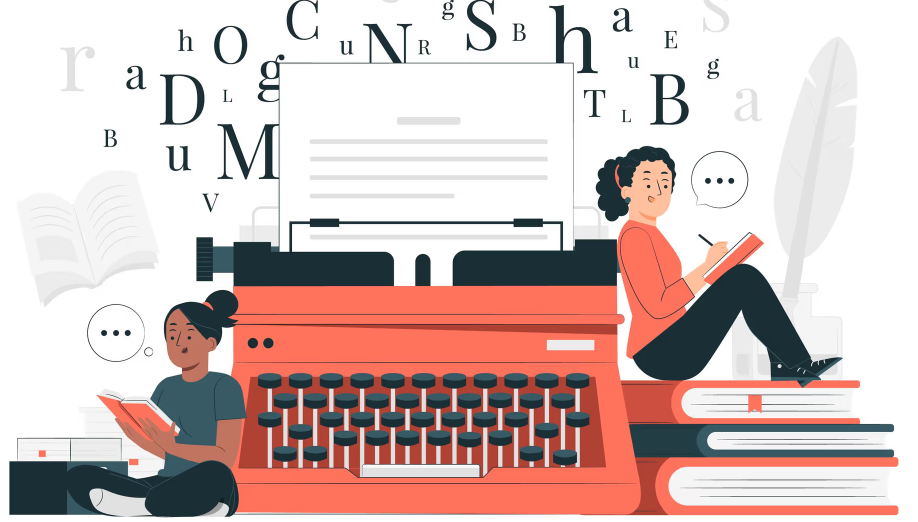Feedback is one of the most powerful tools for growth, particularly in creative fields such as writing. Whether it comes from editors, readers, or beta readers, constructive criticism can help authors refine their work, develop their style, and ultimately reach a wider audience. However, learning how to handle feedback effectively is a skill in itself. Not all criticism is useful, and not all suggestions need to be implemented. The key lies in knowing what to accept, how to interpret it, and how to apply it to improve your work.
This essay explores strategies for engaging with feedback in a structured, productive way. It considers the types of feedback commonly encountered by writers, offers techniques for analyzing and prioritizing responses, and provides practical tools for applying criticism without losing one’s creative voice.
Understanding Feedback: Sources and Types
Before learning how to apply criticism, it is essential to understand the sources of feedback and the types of critique you may encounter. Each source brings a different perspective and therefore requires different strategies for interpretation.
Sources of Feedback
-
Editors: Professional editors provide feedback focused on clarity, structure, grammar, and overall narrative coherence. Their perspective is informed by experience and industry standards.
-
Beta Readers: Beta readers are typically peers or members of your target audience who offer insights on engagement, pacing, and character relatability. They are less formal but invaluable for understanding how real readers experience your work.
-
Peer Writers: Fellow writers can give technical or stylistic feedback, often highlighting opportunities for improvement that general readers might miss.
-
General Readers: Comments from casual readers can reveal emotional impact, accessibility, or areas of confusion.
Types of Feedback
Feedback generally falls into several categories:
| Type | Focus | Example | Usefulness |
|---|---|---|---|
| Structural | Plot, pacing, overall narrative flow | “The story drags in the middle chapters.” | High – affects the overall reading experience |
| Stylistic | Language, voice, tone | “The dialogue feels unnatural in chapter three.” | Medium to high – enhances readability and voice |
| Technical | Grammar, punctuation, formatting | “There are repeated comma errors.” | High – essential for publication |
| Emotional/Impact | Engagement, relatability, resonance | “I didn’t connect with the protagonist.” | Medium – subjective, but important for reader experience |
| Conceptual | Ideas, originality, plausibility | “The story seems too similar to [famous work].” | Medium – helps improve uniqueness and depth |
Understanding the source and type of feedback helps determine how seriously to take it. For instance, technical feedback from an editor is rarely optional, while emotional feedback from one reader may reflect personal taste rather than a flaw in your work.
Accepting Criticism: Emotional and Intellectual Strategies
One of the biggest challenges writers face is accepting criticism without taking it personally. Emotional reactions can cloud judgment and prevent constructive use of feedback. Here are strategies to approach criticism objectively:
Separate Yourself from Your Work
It is common for writers to equate their work with their self-worth. This leads to defensive reactions when someone criticizes a story, character, or writing style. Remind yourself: feedback is about the work, not you.
Recognize Types of Criticism
Not all criticism is equally valid. Consider these categories:
-
Constructive criticism: Offers specific suggestions and examples for improvement.
-
Destructive criticism: Vague or harsh, often without guidance for change.
-
Subjective opinions: Reflect personal preferences rather than universal flaws.
Learning to filter out destructive or irrelevant feedback protects your motivation while still allowing you to benefit from useful input.
Practice Active Listening
When receiving feedback, especially verbally, try to listen without interrupting. Take notes, ask clarifying questions, and avoid immediate defensive reactions. You can also read written feedback multiple times before responding, allowing emotional distance to develop.
Keep a Feedback Journal
Maintaining a dedicated journal for feedback can be transformative. Include:
-
Who gave the feedback
-
Type of feedback
-
Your initial reaction
-
Potential action steps
-
Outcome after implementation
This approach encourages reflection and reduces impulsive responses to criticism.
3. Interpreting Feedback: What to Accept and What to Ignore
Not all feedback should be acted upon. Determining what to accept, modify, or ignore is crucial.
Questions to Guide Interpretation
-
Is it consistent? If multiple sources point out the same issue, it is likely significant.
-
Does it align with my vision? Feedback should support your creative goals, not undermine your story’s core essence.
-
Is it actionable? Criticism should suggest specific ways to improve, not just state a problem.
Practical Framework for Evaluating Feedback
| Step | Question to Ask | Action |
|---|---|---|
| Identify the type | Is it structural, stylistic, technical, emotional, or conceptual? | Categorize the feedback for clarity |
| Assess validity | Is it consistent with other feedback or common standards? | Accept, partially accept, or ignore |
| Consider the source | Does this person understand my genre, audience, or style? | Weight their opinion accordingly |
| Evaluate impact | Will changing this improve the story significantly? | Prioritize changes with high impact |
| Decide on action | Can I implement this without compromising my vision? | Apply, adapt, or discard |
This structured approach prevents writers from feeling overwhelmed or discouraged by the sheer volume of critique.
Applying Feedback: Practical Techniques
Once feedback has been interpreted, the next step is application. This is where constructive criticism transforms into tangible improvement.
Step 1: Prioritize Changes
Not every suggestion needs immediate attention. Consider:
-
High-priority changes: Structural issues, repeated technical errors, clarity problems.
-
Medium-priority changes: Stylistic or minor narrative tweaks.
-
Low-priority changes: Personal preferences that don’t affect the core story.
Step 2: Implement Iteratively
Instead of trying to apply all feedback at once, tackle one type of change at a time. For example:
-
Fix technical errors first (grammar, punctuation, formatting).
-
Adjust structural issues (plot holes, pacing).
-
Refine stylistic or voice-related feedback.
-
Incorporate emotional or engagement suggestions.
This stepwise approach avoids overwhelming the writer and allows for clearer evaluation of each change’s effect.
Step 3: Test Changes
After applying feedback, consider:
-
Re-reading the revised sections yourself
-
Sharing updates with beta readers or editors for follow-up
-
Using writing software or tools to measure readability and clarity
This creates a feedback loop, ensuring each improvement genuinely enhances your work.
Step 4: Maintain Creative Integrity
It is essential to retain your unique voice. Not all suggestions will fit your story, and that’s okay. Ask yourself:
-
Does this change support my story’s theme or character development?
-
Will it alienate my target audience if I ignore it?
-
Can I modify the suggestion to align with my vision?
Balancing feedback with creative integrity ensures that your work improves without becoming a patchwork of other people’s ideas.
Summary Table: Feedback Management at a Glance
| Stage | Action | Key Considerations |
|---|---|---|
| Receiving | Listen actively, take notes | Separate self-worth from work |
| Evaluating | Categorize, assess validity, consider source | Prioritize consistent and actionable feedback |
| Interpreting | Decide what to accept, partially accept, or ignore | Align changes with vision and impact |
| Applying | Implement iteratively, test changes | Maintain creative integrity, monitor improvements |
Conclusion
Feedback is not merely an external opinion; it is a roadmap for growth. By understanding who is giving feedback, the type of criticism, and the best methods for interpreting it, writers can transform even the harshest critique into a valuable learning experience. Accepting feedback requires emotional discipline, careful evaluation, and a structured approach. Applying feedback effectively involves prioritization, iterative implementation, and maintaining one’s creative voice.
Ultimately, the writers who thrive are those who embrace criticism not as a judgment of their talent but as an opportunity to refine their craft. By combining openness, discernment, and practical application, every piece of feedback—whether from editors, beta readers, or general audiences—becomes a stepping stone toward producing work that resonates, engages, and endures.



